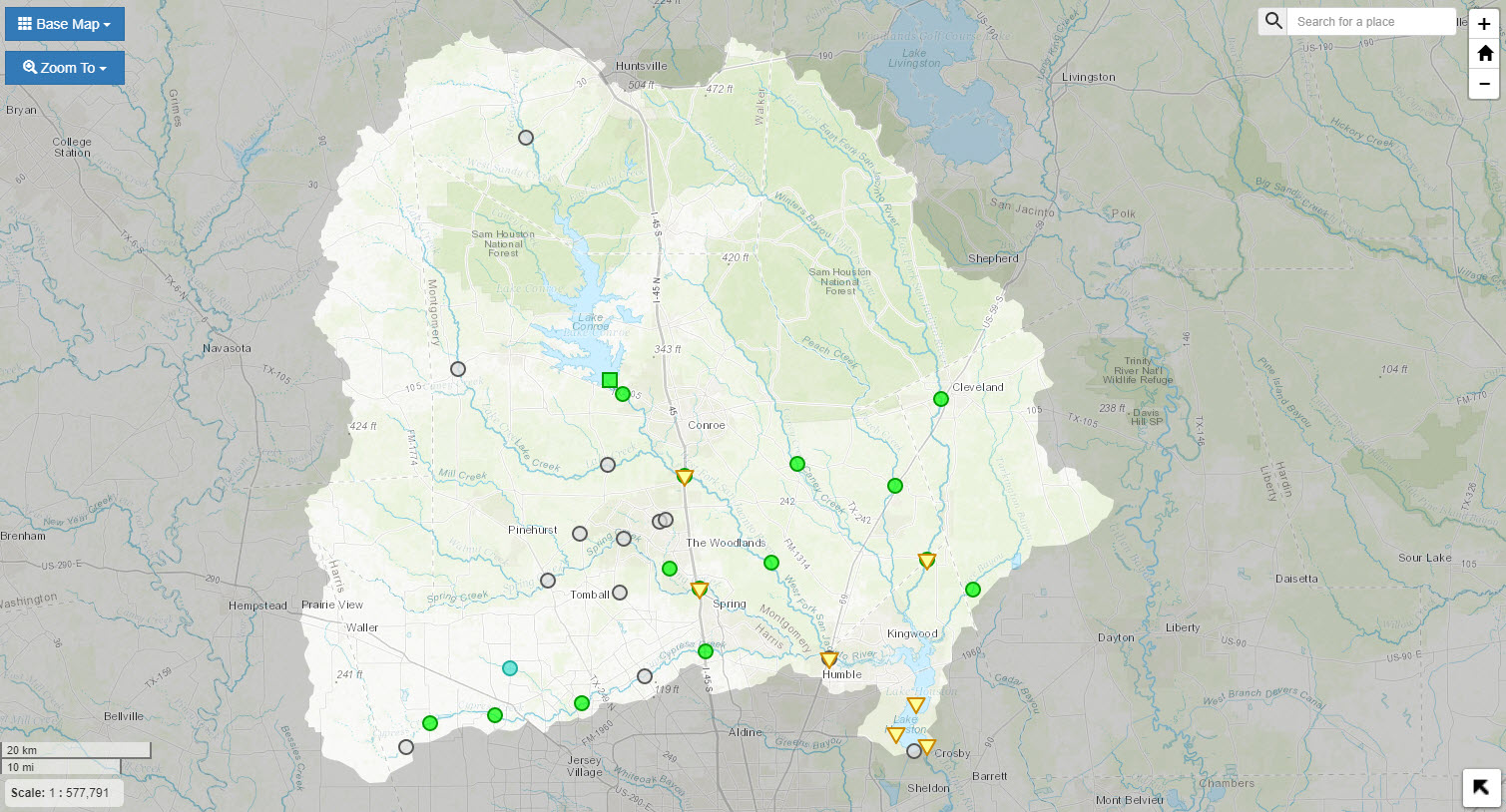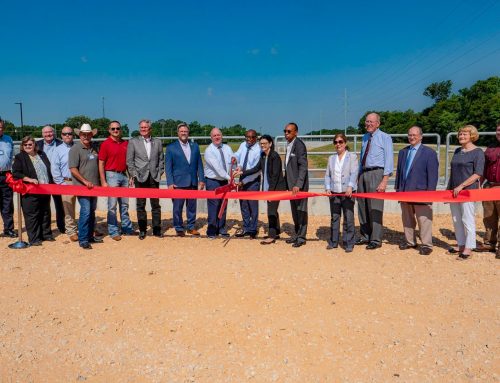Real-time water-quality, streamflow and water height information for Lake Houston and the surrounding San Jacinto watershed are now available from a new web application from the U.S. Geological Survey, done in cooperation with the City of Houston.
Lake Houston is the primary drinking-water source for Houston, Texas. Real-time data are required to evaluate the effects of watershed influences, such as land-use change and storm events, on Lake Houston water quality. These data will help water treatment facility operators make informed decisions about adjusting treatment methods in response to changing water-quality conditions.
Real-time measurements are updated hourly and visualizations are accessible from 40 USGS observation stations, which collect a combination of lake, stream, groundwater well, precipitation and water-quality data. The map viewer includes supporting data layers, such as current and forecasted weather conditions and hazard warnings. Users can view seven real-time water-quality observation stations: four located on streams that flow into, and three within, Lake Houston. The continuous water-quality monitoring stations are located in urbanized and rural parts of the watershed and measure various parameters such as turbidity, pH and others.
“It is key that we provide open and accessible real-time hydrologic data for both City of Houston decision-makers and residents to illustrate conditions in the region,” said USGS hydrologist Sachin Shah. “Providing an easy-to-use web application simplifies the science and allows the public to explore, visualize and compare stream levels and how water-quality conditions are changing over time.”
Learn about the historical context of Lake Houston’s water-quality, explore real-time turbidity data in the Lake Houston watershed, or view associated Lake Houston publications and data by visiting the USGS water-quality monitoring on the Lake Houston website.








